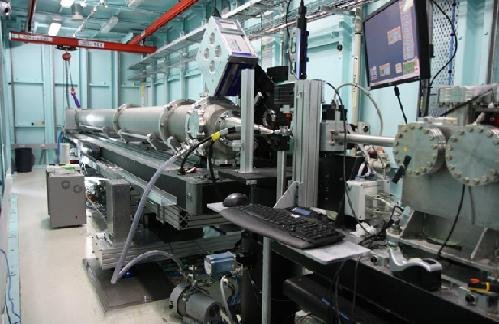Endstation of the SAXS / WAXS beamline
For detailed information about samples for SAXS / WAXS analysis and regarding sample mounting at the beamline, please visit the Pre Experiment Planning section of the Beamline Wiki.
For information and suggestions for writing a strong application for beamtime on the SAXS/WAXS beamline see the Beamtime on this beamline page.
To download a local copy of scatterBrain, please visit the Software section.
The SAXS/WAXS beamline is a flexible x-ray scattering facility due to the design of the optics and a highly adaptable endstation and sample stage. Transmission SAXS and vertical dispersion WAXS are the primary roles of the beamline. A bounce-down vertical focusing mirror also permits grazing incidence (GISAXS) experiments also. A flexible sample stage is used to support many sample types and sample environments, details of which are available on the Beamline Wiki.
The beamline utilises an undulator source that provides a very high flux to moderate scattering angles and a good flux at the minimum q limit or 0.0012 inverse Angstrom. Optical alignment is such that large changes of energy are rapid and straightforward allowing changes to be readily made during an experiment. Additional details of the source flux may be found on the SAXS Specifications page. Details of the Q-range accessible for different arrangements of the SAXS camera may also be found on the SAXS Technical Specifications page.
An on-axis video camera allows parallax-free sample viewing and alignment at all times before and during exposure. This enables precise and rapid sample alignment allowing high throughput and small samples. The endstation uses a 1M Pilatus detector for SAXS and a 200k Pilatus detector for WAXS that provide excellent dynamic range, single photon per pixel sensitivity, low noise and fast time resolution (30 and 150 frames per second respectively).
The most recent version of the scatterBrain IDL program developed at the SAXS beamline may be found on the Data Analysis page here. A manual for scatterBrain is located in the Post Experiment Information section of the Beamline Wiki.
AreaVision, software used for the sample viewing cameras on the beamline, is available here for windows and linux.
If you have any questions regarding the beamline or experiments on the beamline please contact the beamline staff.
For general information about Small Angle Scattering the canSAS website provides a range of resources and tools.

